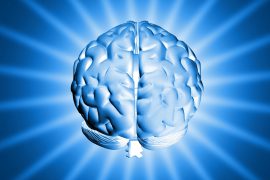Together we teach in BCMB2X01Biochemistry and Molecular Biology, a second-year unit of study with over 800 students enrolled across 40 different degrees spanning science, medicine, psychology, engineering and arts. Our students typically join us from diverse backgrounds and with different interests, so with a large coordination team it’s important that we have a united strategy when it comes to content delivery.
Brightening up our content
Teaching in our discipline is most effective using the incremental storyboarding and concept mapping approaches traditionally associated with whiteboards. For example, we can work through calculations by writing each step in real time as we explain the process. We saw the lightboard as the modern extension to this and aimed to create videos that were fun, engaging, and (let’s face it!) put the ‘talent’ in the spotlight. We aimed to address two concerns with these lightboard videos; students needing more time to understand concepts, especially calculations, and students not feeling prepared for practical classes, even after reading through the notes.
We prepared videos using the lightboard to explain biochemical calculations and to help them prepare for practical classes. Students found the lightboard style to be engaging and helpful with their study, with much-increased engagement so far this semester:
I absolutely love the lightboard videos, they are always super informative and helpful. There is also something about the floating writing which makes it so visually satisfying… as someone who is not the strongest mathematically these videos are great in breaking down concepts in easily digestible fragments, instead of loads and loads of calculations in one video.
–BCMB2X01 student
Surprisingly, the primary beneficiaries of these videos have not been the students but the tutors and demonstrators (teaching assistants, or TAs).This is important because TAs are pivotal in determining the success or failure of a unit of study. TAs often work closely with students in smaller groups and shape the learning experience. Interacting with students on a personal level, they influence the overall mood and attitude of the class.
Illuminating our teachers
Large units of study can have teaching teams of up to 70 TAs, and diversity is inherent in their backgrounds and confidence levels. Our team includes everyone from PhD students who are not much older or more experienced than the students they are to teach, to retirees who have extensive subject-matter experience but are perhaps less familiar with contemporary teaching philosophies. Unit coordinators face the challenge of uniting disparate teams and ensuring clear and consistent delivery of expectations, content, and learning experience. TAs may move through content and instructions at a pace that suits them rather than the students; adaptivity in the classroom is something that can take a good deal of time to develop.
As a slow reader, I find the lightboard videos to be particularly helpful when I need to thoroughly learn new concepts, as is often the case when preparing to teach. Being able to go through the videos at my own pace allows me to grasp the material more fully.
– BCMB2X01 TA
The lightboard videos serve as a clear and concise practical guide, communicating the path for TAs to excel in their roles. Unlike conventional methods such as PowerPoint presentations or printed notes, lightboard videos offer a dynamic visual representation of teaching in practice, covering elements like the pace and flow of instruction alongside the academic content. TAs can then reflect on this to develop their approaches to teaching.
I found the videos massively helpful… Having [academics] step through the methods, give context to the calculation and draw pictures of the working, helped me understand what was happening, in a much more effective and efficient way than a textbook.
– BCMB2X01 TA
Moreover, the lightboard facilitates a mentoring environment, allowing experienced teachers to showcase their methods. We have pioneered a “double act” approach featuring two presenters behind the board, which perfectly encapsulates our desired tutoring style—engaging, conversational, and collaborative, moving away from traditional didactic methods.
Find out more, and see their approach ‘live’, in this video featuring Matt and Gareth.
Looking forward, we plan to integrate these videos into H5P interactive modules or Canvas quizzes. TAs will be able to test their own understanding before class; providing the coordination team with insights through analytics in order to identify any gaps that require attention. The lightboard not only provides a new medium for us as teachers to shine and to support students in their learning, it serves as a powerful tool in preparing tutors and demonstrators for their roles.
Find out more
- Read more about the Lightboard, and how you can access it.
- Visit the Educational Innovation Media Team intranet page.





